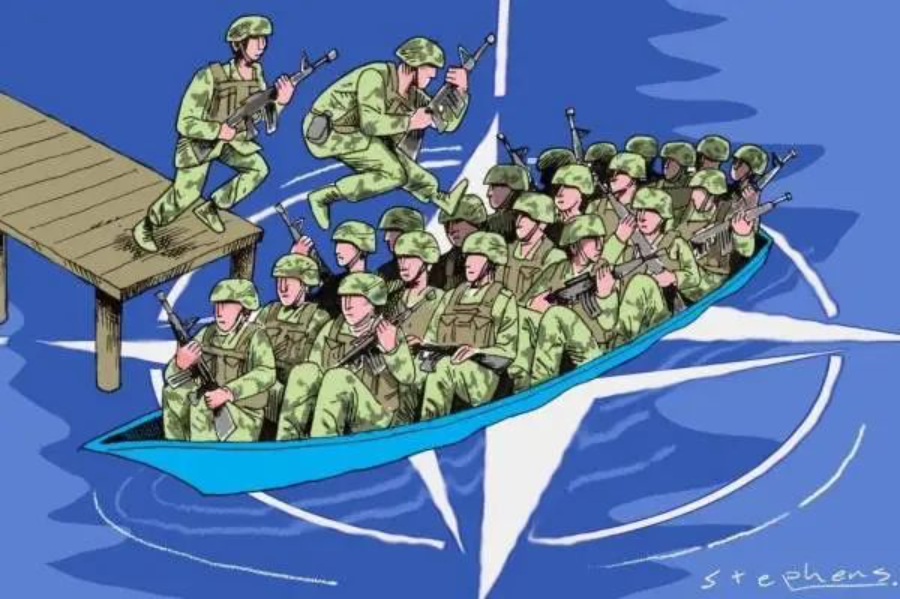When the audience at a concert hear a singer hitting the highest note, they know the song is probably coming to an end. And Nato’s future will be much the same: when Sweden and Finland join – a sure thing in the near future, the 32-member transatlantic alliance might have reached the end of its expansion.

Of the other three candidates on the waiting list for Nato membership, Georgia and Ukraine’s requests appear doomed by Russia’s warring response. It remains to be seen if Moscow would react as it has warned if Bosnia and Herzegovina takes steps towards joining Nato, but the alliance might also think twice after seeing what has occurred in Ukraine.
The cold war in Europe has never really ended with the fall of the Soviet Union. The battlefield in Ukraine is but a stage of continued rivalry for sphere of influence between Nato and Russia.
Does Russia have a legitimate sphere of influence? If Moscow believes there is one, and would fight for it, then it does. This is easy to understand if one thinks of how the United States reacted when the Soviet Union placed missiles at its doorstep in 1962. The Cuban missile crisis brought the world close to the brink of an all-out nuclear war.
Military alliances survive on “threats”. If they fail to find one, they will create one. But for a juggernaut such as Nato to survive, it needs to constantly expand.
Examples of Nato seeking out threats can be seen in the 78-day bombing of Belgrade in 1999 during the war in Kosovo. It can also be seen in the 2011 operation by a Nato-led coalition against Libya and its ruler Muammar Gaddafi. The operation led to Gaddafi’s ousting and the country was plunged into the depths of civil war.
But no threat is bigger and more useful than a “Russia threat”. Yes, Russia is not the Soviet Union, but who looks most like the Soviet Union? Only Russia. Both Mikhail Gorbachev and Boris Yeltsin expressed interests in Nato membership for Russia, but unsurprisingly they were rejected. Russia’s membership in Nato would render the alliance meaningless and dissolve it from the inside.
The war in Ukraine has strengthened the solidarity of Nato, but only for a while. Instead, it might well become a turning point in the eventual disintegration of the alliance. Out of fear of Russia, more European countries in Nato will most certainly increase their defence spending. This will add to Europe’s strategic autonomy from Washington.
A typical example is Germany. Before the war in Ukraine, the richest country in Europe has consistently spent less than 2 per cent of its GDP on defence, which is an obligation for Nato members. But in February, Chancellor Olaf Scholz announced that Germany would spend more than 2 per cent of GDP on defence every year. Like a magician who suddenly pulls a rabbit out of their hat, he announced a €100 billion (US$102.1 billion) fund for the armed forces.
Europe's strategic autonomy would allow the US to leave Europe to the Europeans so it can focus on China, which it perceives to be a greater long-term threat than Russia. For Washington, an ideal situation is one where Nato stays focused mainly on collective defence in Europe while at the same time European allies support the US in containing China in the Indo-Pacific.
This is a daydream. So far, Britain, France and Germany have not done much beyond a few symbolic sailings through the South China Sea in the name of freedom of navigation. Although China was identified as a “systemic challenge” for the first time at the Nato summit in June, Nato has yet to explicitly describe China as a “threat”.
For European allies of the US, too much focus on China risks diverting the alliance from the real threat: Russia. China and Nato are too far away from each other. It's inconceivable that China would one day send troops to fight against a European country. Likewise, it's hard to imagine that Nato would get directly involved in a potential conflict in the Taiwan Strait.
Even though Nato invited leaders from non-allied partners Japan, Korea, Australia and New Zealand to attend this year’s summit for the first time, an “Asian Nato” is unlikely to take shape. In the Indo-Pacific, even the closest ally of the US might not wish to be seen as a member of the anti-China club.
An Asian Nato has already been tried once in the form of the Southeast Asia Treaty Organization. Founded in 1954 and described by Sir James Cable as "a fig leaf for the nakedness of American policy", it was primarily created to block further communist gains in Southeast Asia, but it was only in existence for about two decades. Today, ASEAN is China’s largest trading partner.
Only if China and Russia become allies can Nato thrive in a new cold war. But there is no evidence of a Sino-Russian alliance if one watches through the prism of the conflict in Ukraine. Beijing has managed, however painstakingly, to strike a balance between its strategic partner Russia and Ukraine, which has China as one of its largest trading partners.
China’s carefully calibrated neutrality might not be what Europe wants, but it should be acceptable to Europeans who are nervous about a potential Sino-Russian alliance. The fact that China hasn’t provided military assistance to Russia should be a relief.
If small nations get together for self-defence, it is understandable. But if the largest alliance on earth wishes to expand, it is not about defence but enforcing its own values on others with a big stick. No alliance will last forever. As long as the West continues to decline though, Nato will be on the wane. French President Emmanuel Macron called Nato “brain dead”, but perhaps it looks more like a zombie that is still walking.
(This article was first published on South China Morning Post on July 27.)
